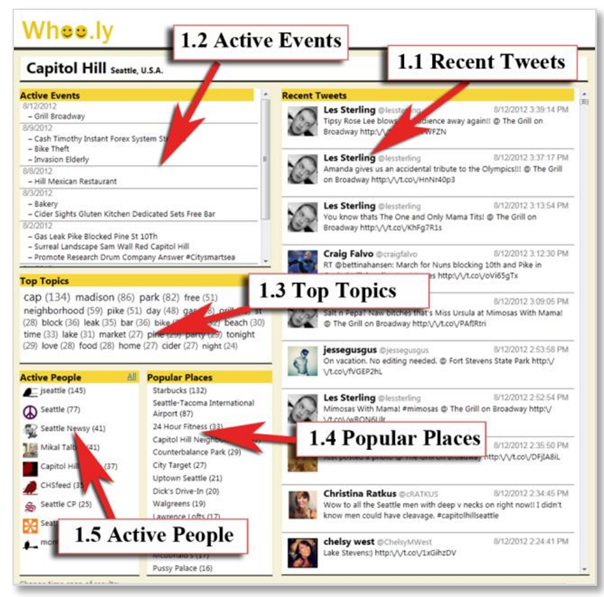Last week I sent an email reply to danah boyd in response to her thoughtful post about the Facebook study. She encouraged me to post it publicly, but I was a bit scared by the viciousness and panic of the reactions. At the same time, I worried that the silence of people who do research …
Author: Andrés Monroy-Hernández
Facebook “Courage” Page versus the Knights Templar’s Cartel
Organized as self-defense forces, some residents of the Mexican state of Michoácan have been attempting to regain control of their towns from powerful organized criminals. Although these Mexican militias have received a fair amount of media coverage, its fascinating social media presence has not been examined. Saiph Savage, a grad student at UNAM/UCSB, and I have started …
Continue reading Facebook “Courage” Page versus the Knights Templar’s Cartel
MSR FUSE Labs 2014 internships in the Seattle area
FUSE Labs at Microsoft Research is seeking interns for 2014. For these positions, we are looking for graduate students from Computer Science, Information Science, Design, Media Studies, Social Science, and other fields with a focus on social computing and social media. FUSE Labs is a research and development lab at Microsoft Research focused on the design, study, and …
Continue reading MSR FUSE Labs 2014 internships in the Seattle area
#YoSoy132, a year later
Last year, Gilad Lotan and I spent some time analyzing the #YoSoy132 protests in Mexico using data from Twitter. Several articles and even books about #YoSoy132 have come out since. For example, De Mauleón wrote an excellent piece for Nexos (in Spanish) that resembled some of our own analysis. Sadly, Gilad and I got busy and abandoned the project, but …
Can crowds fill the void left by defunct newspapers? Reflections on our experiments with locative crowdsourcing
Write up by Andrés Monroy-Hernández and Elena Agapie, building on the work of J. Nathan Matias Motivated by the disappearance of local newspapers, this past summer, we started to explore new ways of supporting community news production through collaborative writing tools. The first incarnation of this is NewsPad, a system for neighborhood communities to collaboratively to report on local events such as …
Multilingual Interactions through Machine Translation—Numbers from Socl
For the past two years, social media platforms have been rolling out machine translation in the hopes of enabling multilingual interactions. However, the people interacting in these platforms often know each other already, and have a language in common (i.e., friends). But what happens when machine translation is used to facilitate interactions among strangers, who perhaps have common interests but not …
Continue reading Multilingual Interactions through Machine Translation—Numbers from Socl
The 3 things you can learn about your neighborhood using Whooly
Along with my colleagues Shelly Farnham, and Michal Lahav—and our interns Yuheng Hu, Emma Spiro, and Nate Matias—we have been exploring ways of discovering and fostering latent neighborhood information to help people understand what’s happening in their local communities. As part of this research, we have created Whooly an experimental mobile website that discovers and highlights neighborhood-specific information on Twitter in real-time. …
Continue reading The 3 things you can learn about your neighborhood using Whooly
How is the Brazilian Uprising Using Twitter?
By Andrés Monroy-Hernández and Emma Spiro More than a million Brazilians have joined protests in over 100 cities throughout Brazil in the past few weeks. Since their early beginning as a "Revolta do Busão" (Bus rebellion) to reduce bus fares, the protests now include a much larger set of issues faced by Brazilian society. Protesters …
Continue reading How is the Brazilian Uprising Using Twitter?

Whoo.ly: Facilitating Information Seeking For Hyperlocal Communities Using Social Media
You hear sirens blaring in your neighborhood and, naturally, you are curious about the cause of commotion. Your first reaction might be to turn on the local TV news or go online and check the local newspaper. Unfortunately, unless the issue is of significant importance, your initial search of these media will be probably be …
The New War Correspondents: The Rise of Civic Media Curation in Urban Warfare
A few weeks ago, while I was visiting a city in northern Mexico, I witnessed some of the drug-related violence people have been experiencing almost every day: several bodies were hung from a bridge and a number of shootouts were reported throughout in the city. As if that was not terrifying enough, I was not able …
Continue reading The New War Correspondents: The Rise of Civic Media Curation in Urban Warfare
